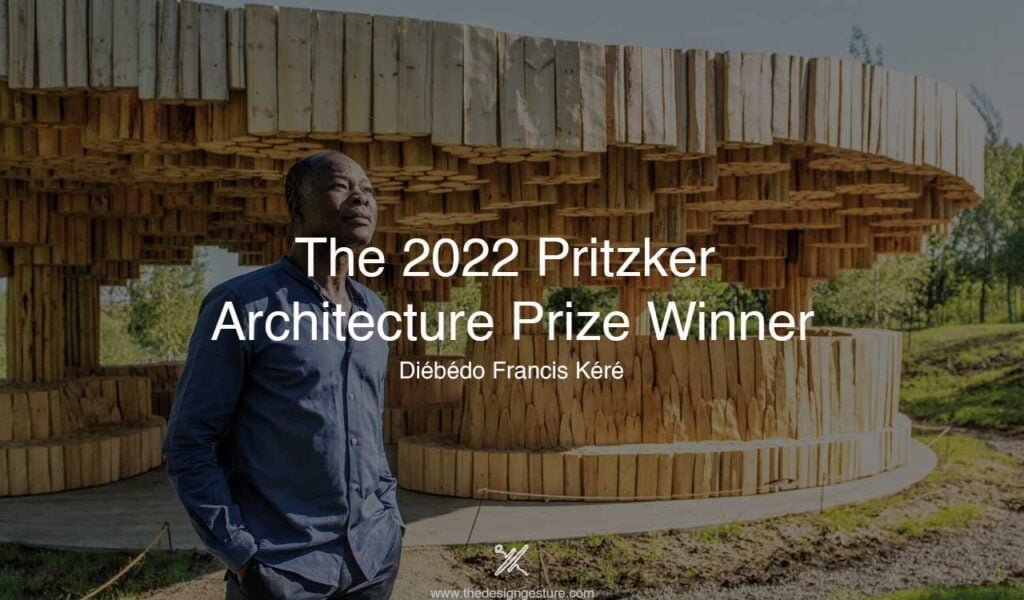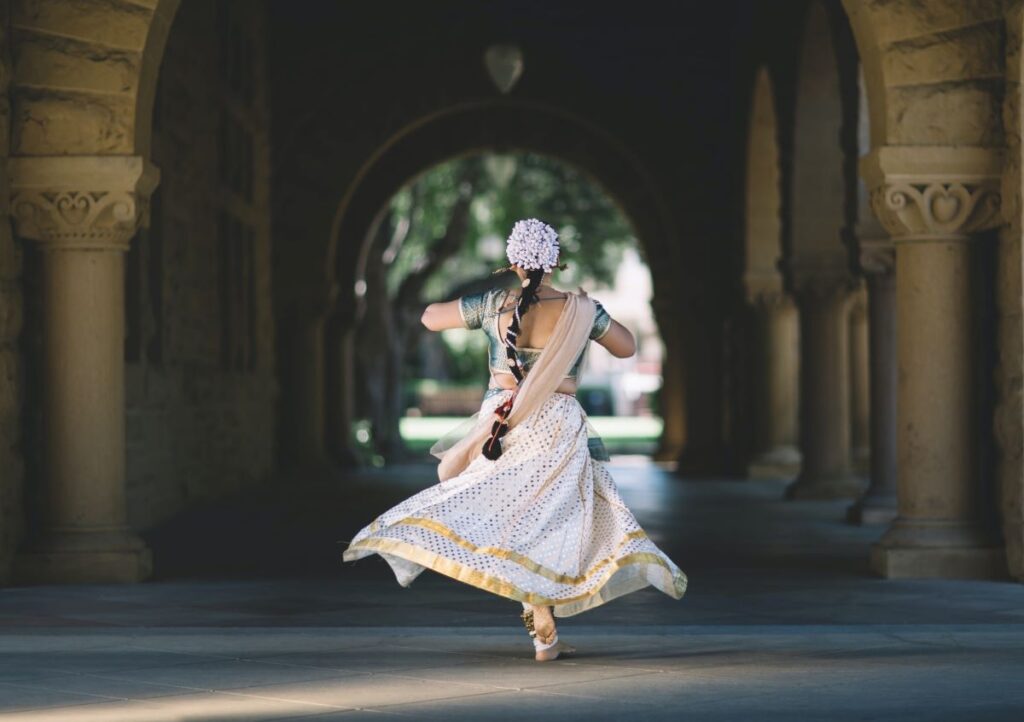“I am hoping to change the paradigm, push people to dream and undergo risk. It is not because you are rich that you should waste material. It is not because you are poor that you should not try to create quality. Everyone deserves quality, everyone deserves luxury, and everyone deserves comfort. We are interlinked and concerns in climate, democracy, and scarcity are concerns for us all.”
- Diébédo Francis Kéré
Table of Contents
Introduction
For most architects, living or departed, there is, perhaps, no greater esteem, critique, or evaluation, than being bestowed with prestigious awards, each championing a fragment of his genius, celebrating their art and soul. In the architecture world, the Pritzker Architecture Prize is the highest honour an architect could acquire.
The 2022 Pritzker Architecture Prize laureate is 56-year-old Diébédo Francis Kéré, a Burkina Faso-born architect. His name will now be one among the stratum of absolute luminaries like Zaha Hadid, Norman Foster, I.M Pei, Rem Koolhaas, Frank Gehry, and Renzo Piano, to name a few.
The Pritzker Prize
The Pritzker Architecture Prize, otherwise commonly known as the ‘Nobel Prize in Architecture’ or the ‘profession’s greatest honor’, is an annual international award presented to honour an architect for their notable achievement in the art of architecture.
The award is a tribute to the ‘starchitect’ whose built work distinctly illustrates skill, vision, commitment, and resilience, contributing to humanity, the built environment, and the world around us. The award in itself constitutes a cash prize of 100,000 USD and a bronze medallion. The medallion awarded to each laureate is based on the designs of ‘The Father of Skyscrapers’, Louis Sullivan. On one side is the name of the prize and on the other are the words “firmness, commodity, and delight,” recalling Vitruvius’ fundamental principles of architecture.
History of the Prize
The Pritzker Architecture Prize was established in 1979 by the Hyatt Foundation. The Pritzkers are an international business family whose name is synonymous with the Hyatt Hotels located worldwide. They are widely known for extending their immense support to scientific, social, medical, educational, and cultural activities. Jay and Cindy Pritzker, the founders of the award, believed that this initiative would not only stimulate public appreciation and awareness of the built environment, but also inspire a new generation of creatives to revolutionize the architectural profession.
The first jury, in 1979, consisted of J. Carter Brown, the late J. Irwin Miller, César Pelli, Arata Isozaki (2019 Pritzker Prize Laureate), and Kenneth Clark.
In 1979, soon after the establishment of the award, the Pritzker family commenced the tradition of hosting the ceremony in architecturally and culturally significant sites around the world. Since then, the ceremony has now been held in fifteen countries on four continents, truly befitting its glory.
There is no denying that the recipients of this grand award are some of the greatest architects and pioneers to have ever lived. Some of the past laureates include I.M Pei, Aldo Rossi, Kenzo Tange, Tadao Ando, Zaha Hadid, Toyo Ito, Frei Otto, BV Doshi the only Indian recipient, and now Diébédo Francis Kéré.
2022 Award Winner: Diébédo Francis Kéré
On March 15, 2022, Diébédo Francis Kéré was declared the recipient of the 2022 annual Pritzker Architecture Prize, making him the first African to receive this honour. This election of Kéré is not only a historical triumph for a greatly diminished community but it also comes at a time where identities demand to be acknowledged and respected, and institutions are required to faithfully represent cultural and social realities, which goes to show the fresh perspective the Pritzker jury has been taking in recent years.
In recent years, the jury has refocused their observance on lesser-known practices around the world, ethical and morally conscious firms endorsing design as a stimulus for the greater good. With the selection of Kéré, the Pritzker committee continues to adopt that vision, with a renewed focus on sustainability and community.
Born in 1965 in Burkina Faso- one of the world’s poorest, least educated countries with limited access to clean drinking water, electricity, infrastructure, and quite obviously, modern architecture, Francis Kéré was the eldest son of his village chief and the first to attend school. Years later, he moved to Germany on a carpentry and furniture building scholarship, with big hopes of one day creating the classrooms that didn’t exist then. Spoiler alert, he accomplished not only that, but so much more!
He acquired another scholarship from the Technische Universität Berlin in Germany at the age of 30, which was when he began his study of architecture. He graduated in 2004 with an advanced degree in architecture. In 2005, shortly after graduating, he established Kere Architecture, a socially minded design firm in Berlin. He is now a dual citizen of Burkina Faso and Germany.
Apart from the Pritzker Prize, Kere bears multiple prestigious titles and awards like the Thomas Jefferson Foundation Medal in Architecture (2021), Chevalier de L’Ordre National of Burkina Faso (2006), the Aga Khan Award for Architecture (2004), the Marcus Prize (2011), the Global Award for Sustainable Architecture (2009), Swiss Architectural Award (2010), the Global LafargeHolcim Gold (2012), the Schelling Architecture Foundation Award (2014), the Prince Claus Award (2017), and many more.
Diébédo Francis Kéré: What Sets Him Apart
In an era where architecture is almost disconnected from the people who are most directly impacted by its work. Rather than focusing on the societal impact and contribution of buildings and spaces, architects are exclusively concerned with the aesthetic quality and Instagram-ability of the space. The world seems to be flooded with needless skyscrapers and mediocre structures, it goes without saying; it is rare to find architectural work so exceptionally intricate, personal and thoughtful; steeped in traditional and cultural relevance, celebrating people and communities.
Kere’s work defies the norm of architecture and falls gently on the spectrum between cultural relic, social trigger, and contemporaneous art. Through his commitment to social justice, he empowers and recasts communities via the process of architecture through the brilliant use of local materials to relate and respond to the natural climate. Granted many of his projects are in West Africa, he relies on stores of native stone, clay, and wood to replicate the architectural styles used by local peoples, employing a large number of them so the local community can ultimately connect and immerse themselves with the project.
The architect is increasingly known for his ideology of “self-building”. Looking at his portfolio, it is evident that Diébédo focuses on and cherishes the influence of his childhood experiences in Burkina Faso. He claims his work is ‘neither westernised nor traditionally African’ but fits into the context of their surroundings, but understandably, his approach is based on the principles established in Gando, his hometown.
Diébédo Francis Kéré: His Flagship Works
Gando Primary School (2001)
Gando, back in Burkina Faso, is the village in which Francis Kéré grew up. He described his school to be extremely suffocating, with minimal ventilation and almost zero sunlight. With the dream of mitigating these limitations for future generations to overcome and rise above these challenges, the architect began designing this school while he was still studying architecture.
To accomplish this, he used local, inexpensive materials such as earth and added a double-raised tin roof, allowing air to circulate and cool the ceiling, as well as providing large canopies to shelter from rain or sun. Kéré asked local residents to join his teams and unite in the school’s construction, in an attempt to help them acquire the necessary skills, which would later become the source of his future international appreciation and regard for his work.
Kéré’s first project had been a great success helping him earn the Aga Khan Award for Architecture (2004) and the Global Award for Sustainable Architecture (2009).
National Park of Mali (2010)
On the occasion of Mali’s 50th independence anniversary, Diébédo Francis Kéré built and redeveloped a cohesive public realm comprising the National Museum, the Botanical Garden and Zoo, the National Park, a sports centre, and a restaurant sitting atop a rock formation with a spectacular panoramic view.
All buildings are covered from the exterior with locally sourced natural stone, reinforcing the regional identity and saving installation costs. These walls provide natural acclimatization to the internal spaces.
Sarbalé Ke Pavilion (2019)
The House of Celebration or ‘Sarbalé Ke’ in Moore, a language native to Burkina Faso, is a spirited series of structures created for the 2019 Coachella Valley Music and Arts Festival. Dotting the Coachella valley, these structures were inspired by the Burkinabe baobab tree. As the tree matures, its inside holes and skylights develop throughout the main trunk.
The installation features 12 baobab towers, once again introspecting and reflecting on the naturally occurring material, texture, and spatial layout of the architecture in his birthplace, Gando, Burkina Faso. The tallest baobab reaches a height of 19 meters and stands tall at the centre of the formation, followed by one of 18 meters, then 17 meters. These three adjoin at the heart of the village, creating a space for visitors to find shade and rest in the sweltering heat. This gives way to a light-filled, naturally ventilated and shaded interior, perfectly complementing the energy of the youth and the excitement of the music festival.
Conclusion
The Pritzker Architecture Prize Jury rightly said, “Since the world began to pay attention to the remarkable work and life story of Francis Kéré, he has served as a singular beacon in architecture. He has shown us how architecture today can reflect and serve the needs, including the aesthetic needs, of people worldwide. He has shown us how locality becomes a universal possibility.
In a world in crisis, amidst changing values and generations, he reminds us of what has been, and will undoubtedly continue to be a cornerstone of architectural practice: a sense of community and narrative quality, which he himself is so able to recount with compassion and pride. In this, he provides a narrative in which architecture can become a source of continued and lasting happiness and joy.”




